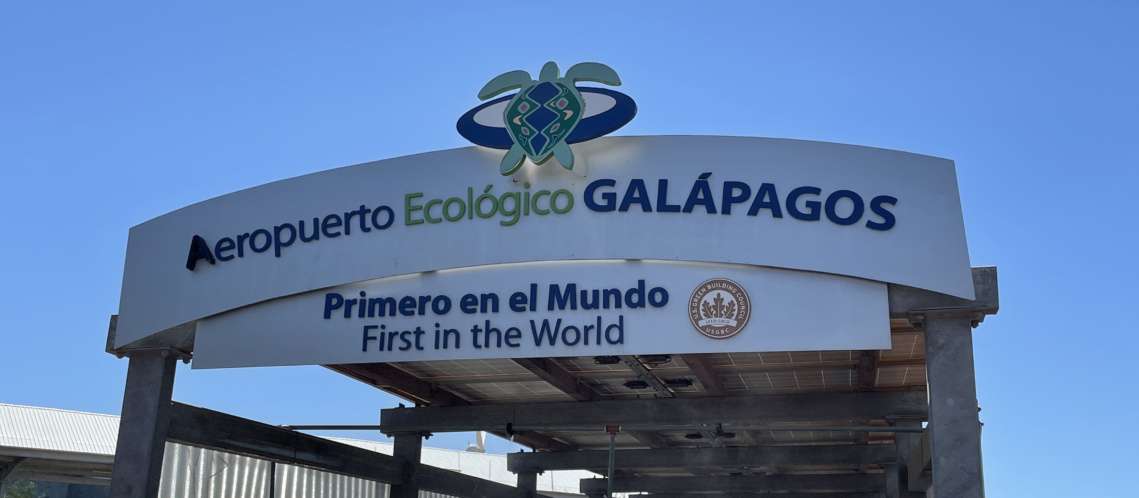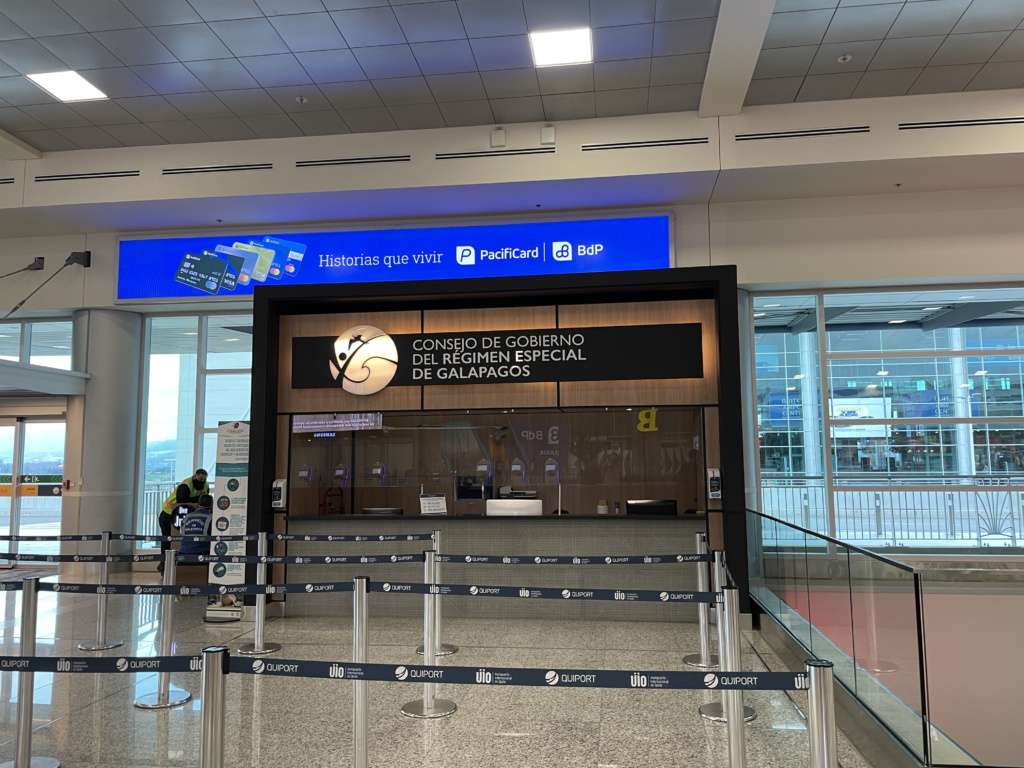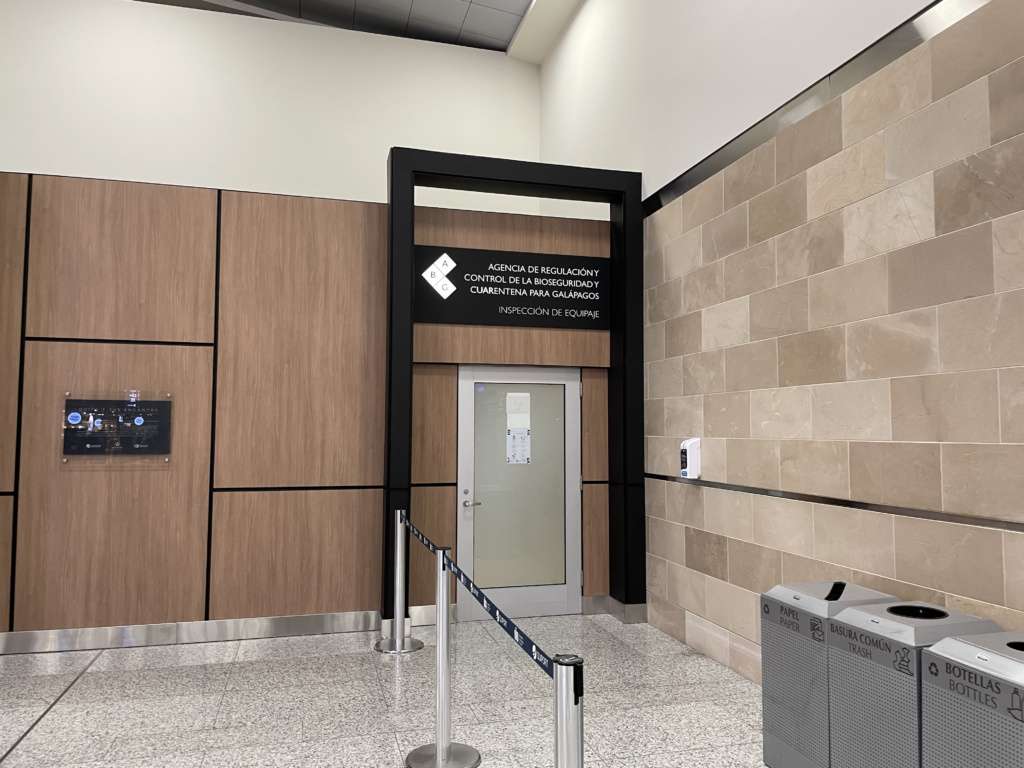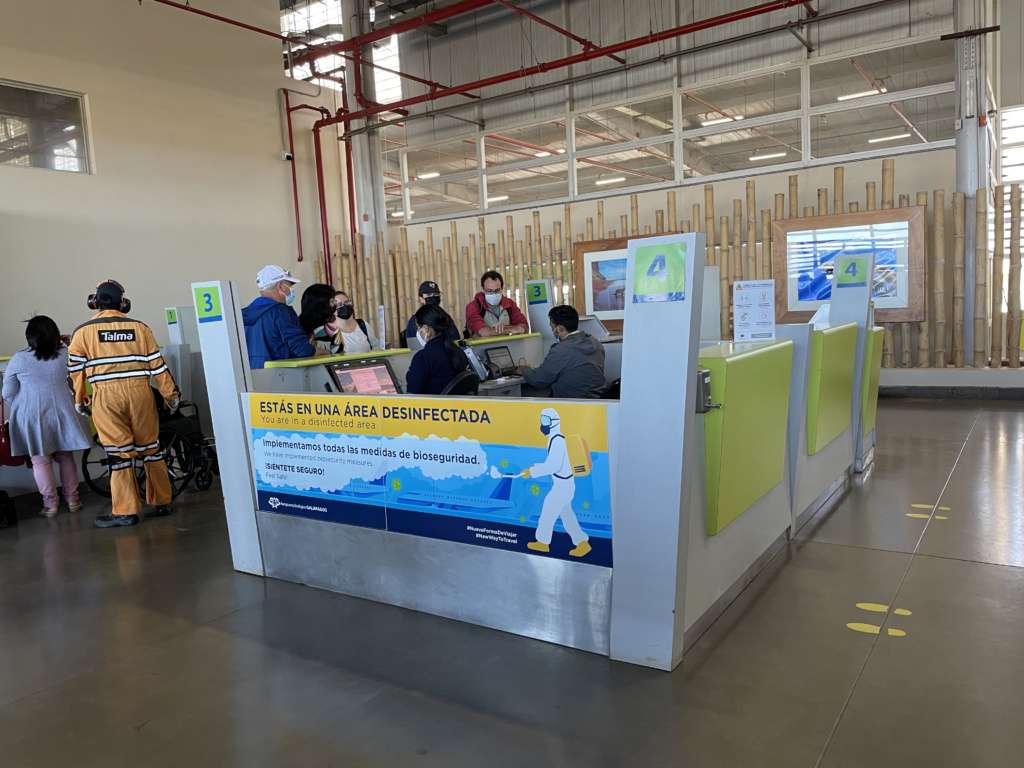Even in normal (non-pandemic) times, the Galapagos is a difficult destination to get to. In addition to its far-flung location, there are unique entry requirements that were put in place to help preserve the fragile ecosystem there. Throw in a global pandemic and covid testing requirements and the trip becomes even more daunting.
Permanent (non-pandemic related) requirements include a special baggage screening, the purchase of a Transit Control Card, and payment of a National Park Entrance fee. A lot of articles I read about these requirements made it sound overly complicated so I was a little stressed about it, but it all turned out to be easy and relatively quick.
As of the end of May 2021 when we took our trip, pandemic-related requirements included a negative PCR test taken within 96 hours of your arrival on the islands. (Proof of vaccination is a sufficient to enter Ecuador but not to get to the islands.) In addition, all visitors are required to have a Salvoconducto form, which confirms your accommodations on the islands.
*** Note that covid-related requirements are constantly changing. For US citizens, the most up-to-date information can be found on the US Embassy’s website.
Below is our step-by-step process to get to the islands, including both regular and pandemic requirements.
- Thursday afternoon PCR test to cover entrance requirements to both Ecuador and the Galapagos
- Saturday flight to Quito – PCR test results were checked 4 times – when checking in for the flight, at the gate, and twice upon arrival in Quito (once during the health screening and once at immigration)
- Sunday morning flight to Baltra
- Complete the following steps at the Consejo de Gobierno del Regimen Especial de Galapagos:
- show PCR test results
- show Salvoconducto form(s) – We had one from each hotel that we stayed in. The intent of this form is to confirm that all tourists have reservations (whether in a hotel or on a cruise ship) for the length of their stay on the islands. (Essentially you can’t just show up and wing it during covid.)
- pay $20 per person for Transit Control Card (TCC) – This must be paid in cash. The TCC is used to register tourists and track their arrival and departure from the Galapagos. You must keep this card and show it again when you depart.
- Complete the special baggage screening – due to the fragile ecosystem and the concern over invasive species, bags are inspected for potentially harmful products. Fresh fruits, vegetables, bulk nuts, and other organic matter are not allowed. Once your bags have been inspected, they zip-tie it shut with a color coded tie. You cannot remove this until you arrive on the islands.
- Complete the following upon arrival in Baltra:
- show your PCR results (again)
- show your passport (again)
- health screening (temperature check)
- pay $100 national park fee ($50 for kids 12 and under) – cash only
- baggage screening for prohibited organic items (again)
- Complete the following steps at the Consejo de Gobierno del Regimen Especial de Galapagos:
A few final tips…
I had three copies of our PCR test results just to be sure. Although they were checked 6 times nobody ever kept a copy, but I figured it was better to have extras just in case.
I had heard about people missing their flight due to long lines to purchase the TCC card in the Quito airport. We had an 8am flight and arrived about 2 hours early and had no issues whatsoever. My youngest was dealing with some altitude sickness so we sat in the lobby for a while and nobody was on the line. When two families showed up I went ahead and got in the line and waited less than 10 minutes. I don’t know if this was due to the early morning flight, fewer tourists during covid, or just dumb luck but I would still recommend arriving 2 hours early to be safe. You don’t want to get all the way to Ecuador and then miss your flight to the Galapagos!
If you fly from Quito, your plane will most likely have a stop-over in Guayaquil to pick up more passengers. The plane was pretty empty when it left Quito but almost completely full when it left Guayaquil. The stopover took longer than I expected but fortunately we were back at sea level so my son who had altitude sickness in Quito didn’t have any further issues.
And lastly, if you are returning to the US at the end of your trip, you will need a covid test within 72 hours of your departure. When we returned to the Quito airport we went to the MedicalVIP office in the building across the street from the terminal. It is open 24/7 and provides both rapid tests and PCR tests. Rapid antigen test results take about 45 minutes. They only accept walk-ups only and unfortunately a larger group pushed past us at the entrance to the building and beat us to the line. We waited close to an hour just to get the test (rapid antigen) but received the results by the time we got to our hotel. There are restaurants and shops in the building so you can send someone to get food while you wait in line.
There were definitely a lot of logistics involved in getting to the islands (especially during the pandemic) but it was 100% worth it. Don’t be intimidated – it sounds like much more work than it is. Everything flows pretty naturally and there are plenty of people around who can help out if you need it.



